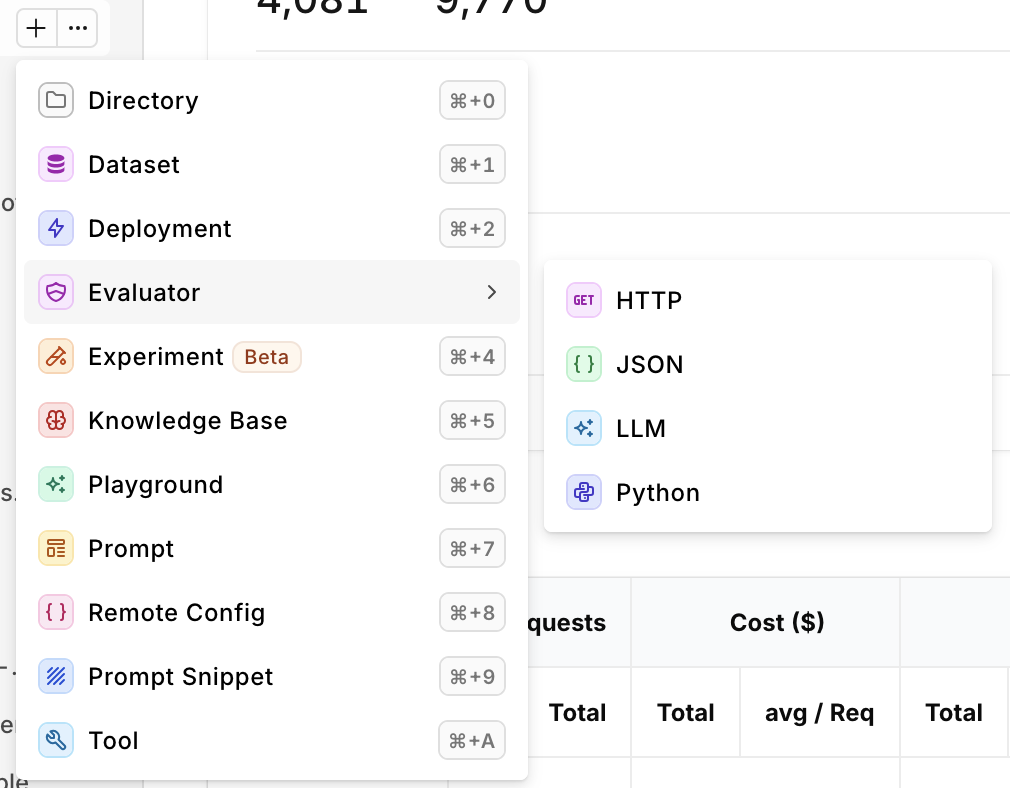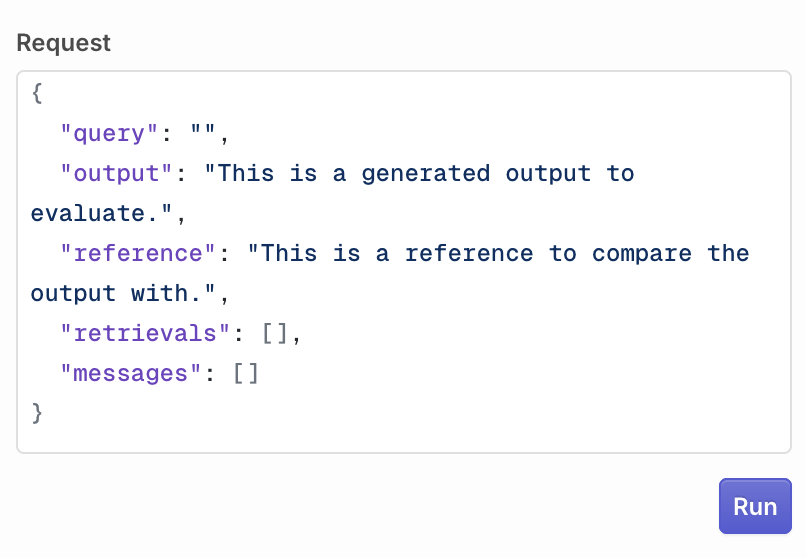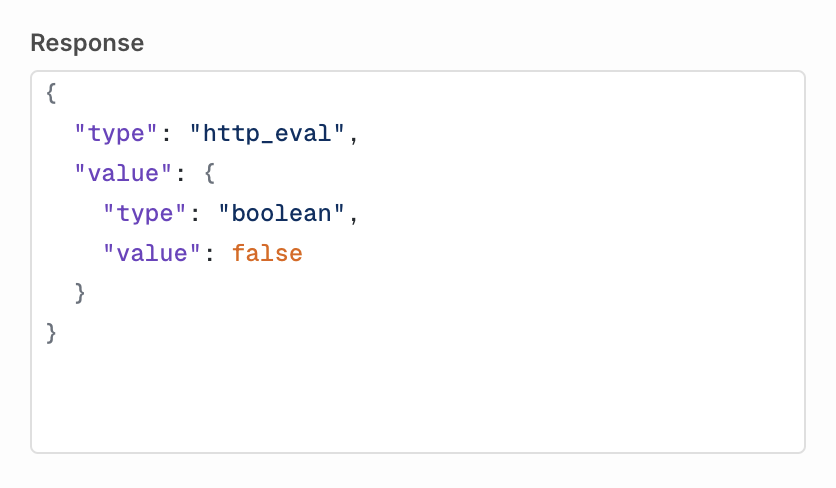You can also create an Evaluator using the API, see Creating an Evaluator via the API.
+ and choose Evaluator
The following modal opens:

Select the Evaluator type
| Field | Description |
|---|---|
| URL | The API Endpoint. |
| Headers | Key-value pairs for HTTP Headers sent during evaluation. |
| Payload | Key-value pairs for HTTP Body sent during evaluation. |
Payload Detail
Here are the payload variables accessible to perform evaluationExpected Response Payload
For an HTTP Evaluator to be valid, orq.ai is expecting a certain response payload returning the evaluation result.Boolean Response
You can decide to return a Boolean response to the evaluation, the following is the expected payload:Number Response
You can decide to return a Number response to the evaluation, the following is the expected payload:String Response
You can decide to return a String response to the evaluation, the following is the expected payload:Testing an Evaluator
Within the Studio, a Playground is available to test an evaluator against any output. This helps validates quickly that an evaluator is behaving correctly To do so, first configure the request:
Here you can configure all fields that will be sent to an evaluator.

An HTTP test response.
Example for HTTP Evaluators
HTTP Evaluators can be useful to implement business or industry-specific checks from within your applications. You can build an Evaluator using an API on your systems that will perform a compliance check for instance. This HTTP Evaluator has agency over calls routed through orq.ai while keeping business intelligence and logic within your environments. This ensures that generated content adheres to their specific regulatory guidelines. For example, in case the content is not adhering to regulatory guidelines, the HTTP call could return the following, failing the evaluator along the way.Guardrail Configuration
Within a Deployment, you can use your HTTP Evaluator as a Guardrail, effectively preventing deployments to respond to a user depending on the Input or Output. Here you can define the guardrail condition:- if the HTTP Evaluator returns a value higher than the defined value, the call is accepted.
- If the HTTP Evaluator returns a value lower or equal to the defined value, the call is then denied.
HTTP Evaluator JSON Evaluator

